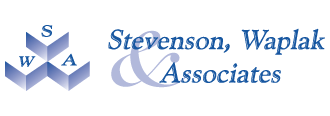Learning Disability (LD): Definition
LD is a disorder that affects people’s ability to either interpret what they see and hear or to link information from different parts of the brain. These limitations can show up in many ways: as specific difficulties with spoken and written language, coordination, self-control, or attention. Such difficulties extend to schoolwork and can impede learning to read, write, or do math.
Learning Disability (LD): Treatment Plan
Individuals with learning disabilities are capable of academic learning, relationship building and employment success, with the right instruction and guidance.
Usually a parent feels that their child is not achieving to their full potential and/or that their educational standing could benefit from:
- Increased individual or small group instruction
- Additional time allowances for written assignments
- A different instructional style
- Better teacher awareness of his/her strengths
- The right behavioral management plan
These benefits could be a reality through professionally identifying learning styles and proper identification of behavioral and emotional factors. A child’s self-confidence and perception of school can grow once this is accomplished.
Learning Disability (LD): Common Signs for Preschool Age
- Pronunciation difficulties
- Slow vocabulary growth
- Difficulty rhyming words
- Trouble learning numbers, alphabet, colors, shapes
- Extreme restlessness, distractibility or poor persistence
- Reluctance to draw or trace
- Weak social skills.
Learning Disability (LD): Common Signs for Grades K-4
- Slow to learn the connection between letters and sounds
- Makes consistent reading and spelling errors including letter reversals (b/d), inversions (m/w), transpositions (felt/left), and substitutions (house/home)
- Slow recall of facts
- Confuses arithmetic signs (+, -, x, /, =)
- Poor planning skills & impulsivity
- Unstable pencil grip
- Trouble learning about time
Learning Disability: Common Signs for Grades 5-8
- Reverse letter sequences (soiled/solid, left/felt)
- Slow to learn prefixes, suffixes, root words, and other spelling strategies
- Avoids reading aloud and writing compositions
- Trouble with word problems
- Slow or poor recall of facts
- Extremely messy handwriting; awkward pencil grip
- Inconsistent performance between environments
- Difficulty making friends
- Poor reader of body language and facial expressions
Learning Disability: Common Signs for Grades 9 and Beyond
- Avoids reading and writing tasks
- Spelling difficulties
- Trouble summarizing
- Weak memory skills
- Slow work performance
- Poor grasp of abstract concepts
- Misreads information
